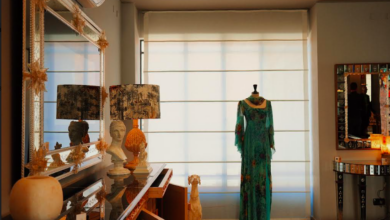
“The city of Alexander,” “The second Egyptian capital,” “The cosmopolitan city,” “The bride of the Mediterranean;” so many are the names given to Alexandria. In the old quarters of the city, first built in the Ptolemaic period (4th century BC), the streets still preserve their original design. However, the more modern parts of Alexandria have been suffering significantly, particularly over the past year and a half; their architecture has been changing, possibly fading with the demolition of a number of buildings built around the turn of the 20th century in favor of lucrative real estate projects. The list of endangered buildings is long, but the most recent addition is the famous Cicurel villa in Roushdi neighborhood, further changing the social formation of the city that began in the fifties with the immigration of many expats out of Egypt after the July revolution.
“Since February 2011, many old villas of architectural interest were demolished discretely by the owners,” says Mohamed Adel Dessouki, member of the Architectural Heritage of Alexandria Committee who blogs about endangered architectural gems of Alexandria on The Walls of Alexandria.
Many buildings, dating back to the 18th, 19th, and early 20th century, have been recently demolished by owners, sometimes with official permits from the governorate and at many times without. In January 2012, Prime Minister Kamal al-Ganzouri decided to remove the Cicurel building from the heritage site list, thus making it eligible for sale and demolition. The government’s illegal intervention in the building’s fate shocked Dessouki and his committee members.
Architects, heritage experts, university professors, students, and many other Alexandrian citizens have since staged sit-ins against the demolition decisions, raising awareness on the topic and creating public pressure. And, in the case of the Cicurel villa, it seems to have worked. This month, the prime minister retracted on his January decision, and issued an official decree to prevent the villa's demolition.
“This recent decree is definitely a successful step in our long fight for the protection of our built heritage in Alexandria", says Dessouki.
The Cicurel villa, with its Art-Deco style, was built in the 1920s by French architects Leon Azema, Jacques Hardy and Max Edrei; and it still carries the name of it owner Joseph Cicurel, the owner of the famous department stores that were nationalized along with the building after the 1952 revolution. Few buildings built in this style still exist in the country.
The crisis of the Cicurel villa presents another example of the absence of clear laws to protect important buildings from the modern period in Egypt, and the difficulty of enforcing them when they do exist. In 2008, the Architectural Heritage of Alexandria Committee, an affiliate of the National Organization for Urban Harmony, listed the Cicurel villa as an architectural heritage site, and was hence protected by Law 144 of the year 2006. But the Arab Marine Navigation Company, which uses the villa as its main office, has been fighting since 2003 to get permission to demolish it. A court ruled in the company’s favor in 2009, declaring the building of no historical or architectural significance. Ironically, the ruling was according to Law 117 of the year 1983 of built antiquities and not Law 144. And in January, Ganzouri issued a decree removing it from the heritage list.
“There were many question marks around this decree,” says Soheir Hawas, head of the Studies Administration at the National Organization for Urban Harmony, the main governmental body responsible for supervising the creation of local heritage lists. Any demolition permit of a listed building should be approved by the concerned governorate after consultancy with the appeals committee, and supervised by the organization. Unfortunately, the process is not as smooth as it seems.
“The Urban Harmony Organization does not have the legal powers to prevent demolition operations of historical buildings,” says Hawas, adding that the administrative procedures of laws managing buildings of historical and architectural value are unclear.
So far, it is public pressure that has been making much of a difference with regard to Alexandria’s architectural heritage. A number of meetings and social media campaigns like Save Alex have been launched, garnering much attention.
“At first, I was a bit worried about the people's reaction to our demonstration,” says Dessouki, but the dynamics on the street were very successful. “The recent call to prevent the demolition of the Greek Club building in Alexandria has pushed us to unite our efforts to protect both buildings: the Greek Club and the Cicurel villa,” he adds.
The people who responded to the civil call managed to present their demands to the governor of Alexandria, who supported it and passed it on to the prime minister. For now, the Cicurel villa is still awaiting the final decision of the court on the 2009 ruling that is being appealed. They hope that this would help save other endangered buildings in the city.
“The case of the Cicurel villa highlights the demolition operations taking place in Alexandria,” says Dessouki. In addition to campaigning against the demolition of the villa, Dessouki has recently tried to shed light on another threatened building, Villa Aguion in Wabour al-Mayya district, another listed building that has been partially destroyed.
The building, also built in the early 20th century, takes its name after its original owner, French architect Gustave Aguion. It was designed by architect Auguste Perret (1874-1954); many of the buildings Perret designed have been listed on the UNESCO World Heritage List. But on the morning of 28 August 2009, neighbors were surprised to find out that parts of the building were being demolished.
The villa is in real danger after its partial destruction in 2009, says Dessouki, although a three-step rescue has been drawn up by Alexandrian architect Alaa al-Habashi and Mohamed Awad, a pioneer figure in documenting and calling for protecting Alexandria’s built heritage.
Much of the problem seems to be related to lax law enforcement. Hence, a group of architects and heritage activists decided to present a petition to Parliament, calling for a freeze of demolition permits for all villas, as well as buildings older than 50 years for the duration of a year.
In parallel to pushing for the revision of existing laws and means of enforcement, heritage workers and activists are hoping to redirect their efforts away from rescue campaigns toward the preservation of heritage sites, public awareness campaigns and education.
Photo Courtesy of Mohamed Adel Dessouki




